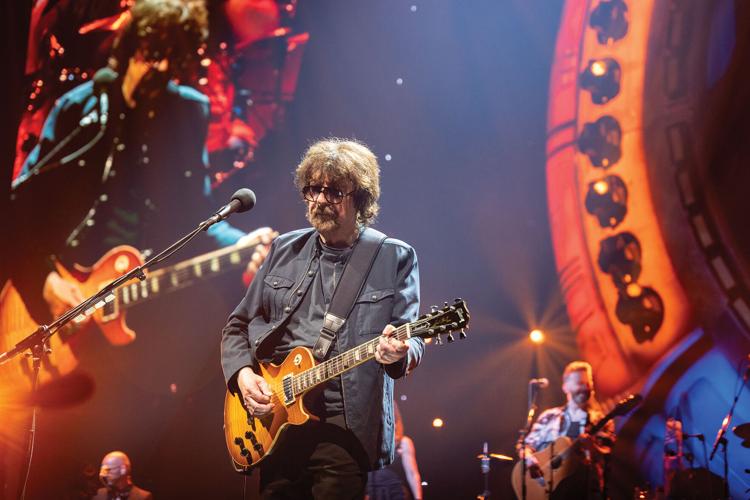One of the few bands who can compose a whole set list from songs that are not only hits but have also become ingrained in our collective memory is Electric Light Orchestra.

Bashed out quickly after the rest of 1975’s Face the Music was finished, the sleek, funky, and sad “Evil Woman” has soundtracked many a walk down the cereal aisle in the years that have followed. Written when weeks of writer’s block ended with an actual parting of clouds, the electrically effervescent “Mr. Blue Sky” has been a morning shower staple almost since Out of the Blue was published in 1977. John Lennon’s favorite song from 1973’s On the Third Day, “Showdown,” gained a second life in the 1990s
Lynne, a native Brit, began his career as a musician with what was effectively a broken toy while growing up in Birmingham, the same industrial area that gave rise to metal godfathers Black Sabbath. Lynne stated in a 1986 radio interview for Westwood One’s Startrack Profile, “I don’t read music or anything.” I recently acquired my first guitar, a plastic one, from a friend who had owned one since he was a young child. I learnt several songs up and down the neck of a single string. There was just one string on it.
Wood eventually asked Lynne to join The Move with him and drummer Bev Bevan. Another advanced sound that was obviously unique started to form as they recorded the band’s last two albums, giving rise to ELO’s consistently rich, never-languid rock ‘n’ pop. Eleven studio albums were released between 1971 and 1986. For more than 15 years, they were a regular in the Top 40 in both the U.K. and the U.S., despite never reaching the top of Billboard’s main singles list.
In his subsequent performance, Lynne left the limelight and expanded his career as a producer and occasional sideman. He produced Cloud Nine by George Harrison in 1987, which helped the Quiet Beatle return to the top of the charts. The Traveling Wilburys, a sort of Americana archetype consisting of Lynne, Harrison, Bob Dylan, Tom Petty, and Roy Orbison, were the next big thing. Concurrently, Lynne recorded Mystery Girl, which was released in 1989 soon after Orbison’s passing, and assisted Orbison in making a significant return in 1988. A few months later, Petty released her five-times-platinum solo LP and rock ‘n’ roll classic Full Moon Fever.
As the list grows, it becomes evident that Lynne, his bandmates, and his visionary idea have influenced mainstream music for fans and performers around the world for many decades. (You can thank Lynne if you enjoy Daft Punk, The Flaming Lips, Cheap Trick, or The Lemon Twigs.) There isn’t much better legacy to leave behind if all pop geniuses must eventually go from active participant to past master.
